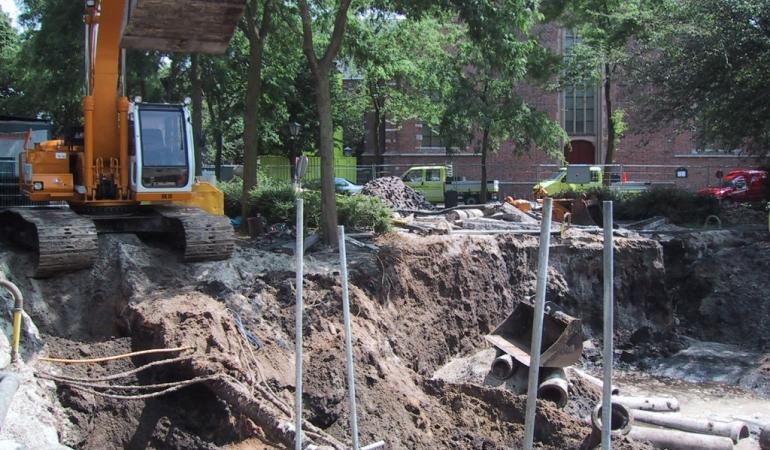
RIVM has derived temporary background values for two types of PFAS in Dutch soil: PFOS (perfluorooctane sulfonate) and PFOA (perfluoro octanoic acid). For PFOS, RIVM recommends a temporary background value of 0.9 micrograms per kilogram of soil and 0.8 micrograms per kilogram of soil for PFOA. Based on this advice, the Ministry of Infrastructure and Water Management has decided to set a new temporary standard for PFAS in soil and dredging material.
PFOS (perfluorooctane sulfonate) and PFOA (perfluorooctanoic acid) are identified as Substances of Very High Concern. These are substances that may have serious effects on human health and the environment. The Dutch policy aims to prevent these substances from entering the living environment and spreading. Nevertheless, PFAS appears to be present in Dutch soil. A background value indicates how much PFAS is already present in the soil. If a batch of soil has a lower concentration of PFAS than the background value, it can be moved within the framework of the Dutch Soil Quality Decree. Soil and dredging material can then be moved without further soil pollution. If the soil meets these temporary background values, the risks to people and the ecosystem are negligible.
Data and limitations
Our advice is based on data from studies carried out by provinces, municipalities and water boards. The data paint a picture of the amount of PFAS in Dutch soil, but this picture is not complete. The advice takes this into account by taking a safe approach when determining the background values.
These temporary values precede the research into the definitive background values of PFAS in the soil in the Netherlands. For this, RIVM will carry out measurements in the soil at approximately one hundred selected locations in the Netherlands. This will provide input for the final action framework on PFAS in soil and groundwater expected by the Ministry of Infrastructure and Water Management in 2020.
About PFAS
PFAS (poly- and perfluoroalkylic substances) are man-made substances that do not occur naturally in the environment. They are used in many consumer products for example because they repel water, grease and dirt. Through the use of these products, factory emissions and incidents, PFAS has been released into the environment.
PFAS do not degrade, can easily spread in the environment and can accumulate in animals, plants and the human body. RIVM investigates the health and environmental risks of PFAS.